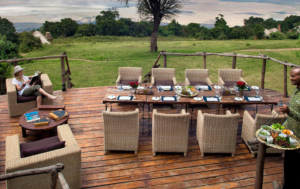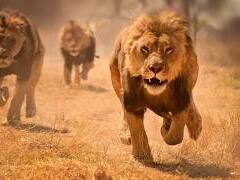Best time to visit Tanzania
Best time to visit Tanzania
The dry season, which lasts from late June to October, is the ideal time to travel to Tanzania for a safari. Tanzania has two different rainy seasons: the “long rains” (April to May) and the “short rains” (November to December). The nation’s “long rains,” which often occur in the afternoon, bring tropical downpours, and some safari sites may have to close. On the other hand, the short rains’ occasionally produce a quick shower.
All year long, Tanzania’s safari regions experience warm days and chilly evenings. While Mount Kilimanjaro and Mount Meru experience below-freezing temperatures, the Indian Ocean coast and areas around lakes are hot and muggy.Depending on where you want to go and what you want to see, you can choose the perfect time for your Tanzania safari. The best time to visit Tanzania for first-time safari visitors is typically during the dry season when wildlife is simpler to follow and detect. Understanding the distinction between the safari high season and low season is an excellent place to start, whether this is your first trip to Tanzania.
Traveling to Tanzania from January to March
January is one of the most remarkable months to travel to Tanzania’s coast if you want to spend time at a tropical beach. Vacationing in Zanzibar means enjoying the island’s powder-soft beaches, clear waters, and complete relaxation. For the Wildebeest Migration, the herds typically enter the southern Serengeti during the first month of the year to give birth to their calves.
February is a hot and muggy month that marks the beginning of calving season when thousands of wildebeest give birth to their young as predators lurk in the shadows. During this time, almost 500,000 wildebeest calves are born. As a result, the plains are teeming with young life that is making its shaky first steps.
Tanzania experiences high heat in March; the first part of the month is often dry, while the “long rains” have arrived early in recent years. Over the summer, the area takes on an unearthly green that starkly contrasts with the brown texture of the soil. The afternoon brings brief but intense rain to the Ngorongoro Highlands, making the mornings comfortable. Another popular month for climbing Mount Kilimanjaro in March.
Visiting Tanzania in April & May
The wettest month of the year is April, and while most of the precipitation takes the shape of afternoon thundershowers, there are frequently large nighttime storms and many overcast days. The western and southern parks have the highest humidity of the year, yet lodgings and Tanzania tours are affordable if you visit during this period.
Although May begins with a lot of rain, things start to dry up as June ushers in the dry season by the month’s conclusion. This month, the Great Migration is making its way from the southern Serengeti to the western corridor.
Traveling to Tanzania during September and October
When there is still no rain in September, there are fewer tourists and fewer bugs because humidity levels are low. If you’re looking to climb Mount Kilimanjaro, September is another excellent month. Tarangire National Park is where you can discover large herds of elephants. The fishing season in Tanzania’s vast lake regions begins this month.
Thunderclouds begin to gather in October, and the first rains start to fall. The most significant time to visit Tanzania for chimpanzee encounters is this month when Mahale Mountains National Park is open, and Lake Tanganyika is warmest. The best time to visit Arusha National Park is in March if you wish to climb Mount Meru.
Traveling to Tanzania in December
SEE WHO TRUSTED US!
Pizza Hut Breaks World Record with Trusted Delivery Partner, Tanzania Tribe Safari, (aka) summit trails.
































